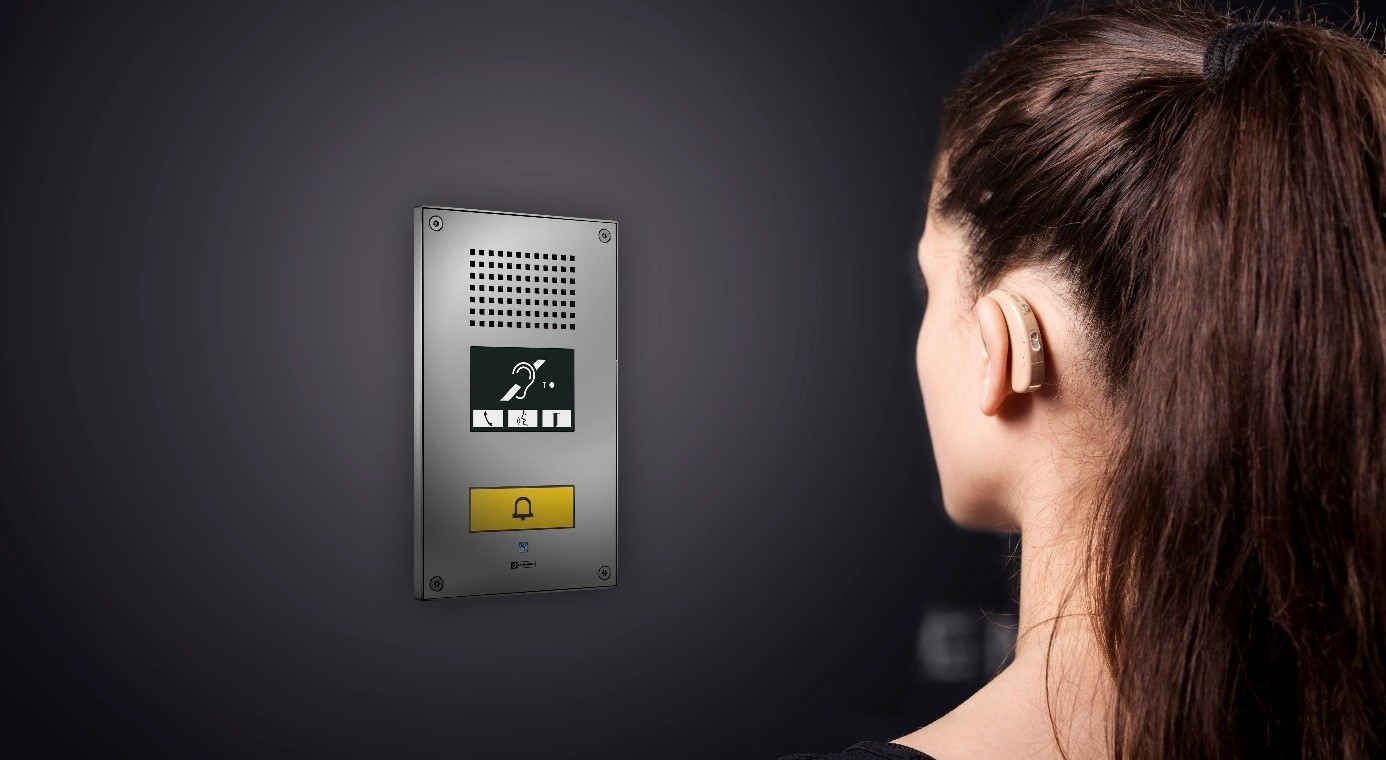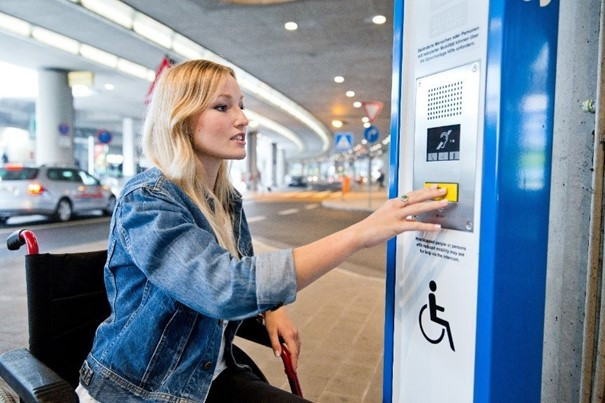From shopping centers to public buildings, from airports to train stations – accessible spaces for everyone, including people with disabilities, are increasingly present worldwide.
However, despite the widespread reach of this phenomenon, the accessibility of communication technologies in public places is still not advanced enough.
In this article, we will explore what barrier-free communication means, the legal requirements in this area, and how we strive to meet these challenges through modern technological solutions.
What does “barrier-free” mean?
"Barrier-free" in the context of urban spaces means eliminating obstacles that hinder or prevent people with disabilities from moving freely and using urban infrastructure. This includes adapting buildings, public transport, public spaces, and communication technologies. A key element is the principle of universal design, which involves creating spaces and products accessible to the widest possible group of users, including those with various types of disabilities.
The social model of disability
It is worth noting that the social model of disability, which suggests that it is not the individual's limitations but the improperly organized social space that creates barriers, is gaining acceptance. Therefore, it is crucial to transform living spaces in a way that allows full participation in social life for all its members, regardless of their physical or mental abilities.

Barrier-free communication technology
The accessibility of communication technologies is one of the important aspects of a barrier-free life. It includes:
Information Systems:
- Audiovisual messages in public places.
- Intercoms and SOS points with functions adapted for people with hearing or visual impairments and those in wheelchairs.
Induction Loops:
- Installed in places such as offices, stations, and theaters to assist people with hearing aids.
Legal requirements
Legal regulations in Poland, such as the Act of July 19, 2019, on ensuring accessibility for persons with special needs, oblige public administration bodies to ensure information and communication accessibility for people with disabilities. This obligation applies not only to the hearing impaired but also to all other levels of disability. Induction loop systems must meet the requirements of EN 60118-4:2007 and the guidelines of the European Federation of Hard of Hearing People (EFHOH).
Innovative communication solutions
Commend, meeting these requirements, has developed the WS 211V DA series – the world's most accessible, barrier-free intercom stations designed with people with visual or hearing impairments in mind. These technologically advanced devices are vandal-proof, waterproof, and can be mounted in various locations, such as building walls, ticket machines, and more.
Examples of implementations in public spaces
Barrier-Free Intercom Stations:
- Large, easy-to-use call button with a raised bell symbol.
- LED pictograms and automatic voice messages providing information about processes and functions.
- Clear, loud voice transmission.
- Natural conversation mode supported by Commend OpenDuplex® technology.
- Integrated induction loop system compliant with IEC 60118-4 standard, transmitting the intercom signal directly to hearing aids.
- High reliability through continuous automatic verification of essential functions and connections.
- Vandal-proof, waterproof design suitable for use in public open areas.
- Units can be mounted in wall constructions, building facades, and wall panels, ticket and vending machines, etc.
SOS Points
Additionally, urban areas feature SOS points equipped with intercom stations. These points are located in parks, stadiums, public utility buildings (toilets, elevators). They allow automatic connection to the Municipal Information desk, where one can request assistance or obtain information or needed help. Moreover, Municipal Information Points have specially adapted Service Points for People with Disabilities.

Ensuring barrier-free communication is not only a matter of meeting legal requirements but also a social responsibility. Modern technologies, such as those offered by Commend, contribute to creating public spaces accessible to all, improving the quality of life for people with disabilities and enabling their full participation in social life.

 Share on
Share on
 Share on
Share on
 Share on
Share on
